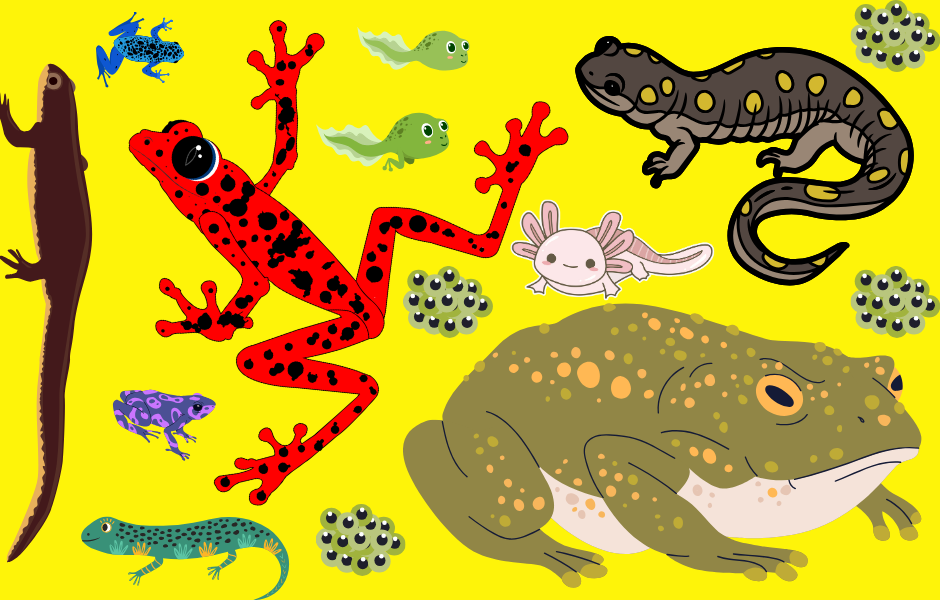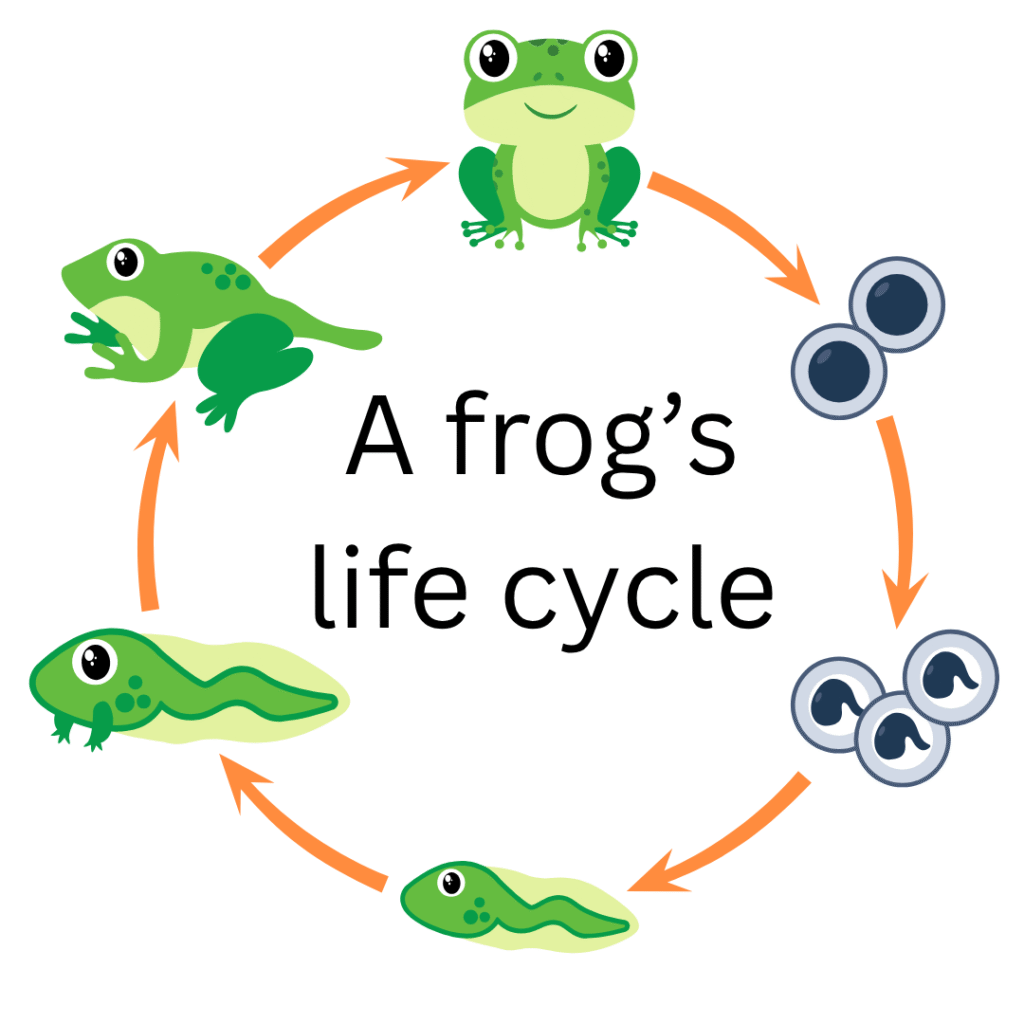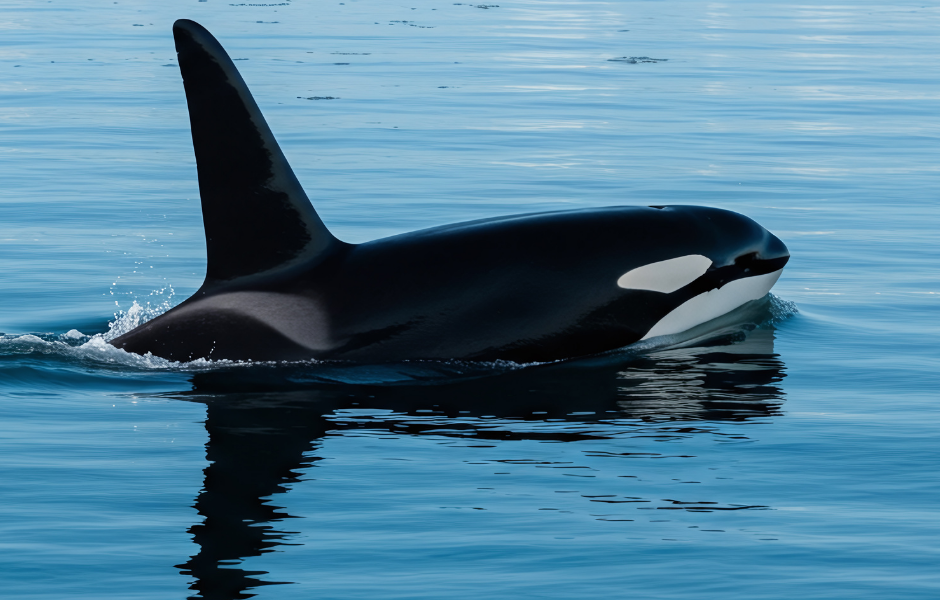
This children’s article, What makes an amphibian an amphibian?, has been written for native English speakers and learners of English as a second or foreign language. It can help children build vocabulary, learn about animal groups, and discover the strange and slimy world of amphibians. Written by Mark Pulley, a teacher and writer who creates fun and informative news articles for English learners.
What makes an amphibian an amphibian?
Amphibians are the animal world’s great shape-shifters. Frogs, toads, newts, and salamanders all start their lives in water and end up living on land, or maybe a mixture of both. In fact, the word “amphibian” means “double life” in Greek!
But what actually makes an amphibian an amphibian? Let’s dive into their world and find out.
Life starts in the water
Amphibians are vertebrates, which means they have backbones. They lay eggs in water, and these hatch into larvae like tadpoles. Tadpoles breathe through gills, like fish, and have tails that help them swim around. As they grow, they change shape and develop lungs, legs, and other adult features. This process is called metamorphosis.
Most adult amphibians breathe through their skin as well as their lungs, which is why their skin must stay moist. Unlike reptiles, amphibians don’t have dry scales; their skin is usually smooth, wet, and often a little slimy!
Where do amphibians live?
Amphibians need water or damp environments to survive, because they can dry out easily. You’ll find them near ponds, lakes, swamps, rivers, and in rainforests. Some live underground during dry seasons, and others spend the day hiding under leaves or logs.
Even though they’re not as widespread as reptiles, amphibians live on every continent except Antarctica. Frogs are the most common; there are over 7,000 different frog species around the world!
Tiny lungs, big problems
Amphibians are very sensitive to changes in their environment. Pollution, climate change, and habitat destruction have caused the number of amphibians in the world to drop sharply in recent years. Around 40% of amphibian species are now threatened with extinction.
Scientists say this is worrying because amphibians are like nature’s early warning system; if they’re in trouble, something is wrong in the environment. That’s why protecting wetlands and forests is so important, not just for amphibians, but for other animals too.
Slimy, strange and super cool
Amphibians may not get as much attention as big animals like lions or pandas, but they’re full of surprises. Some frogs can freeze solid in winter and hop away again in spring. Others can glow in the dark!
The axolotl, a Mexican amphibian, can regrow its legs, tail, and even parts of its brain. And the largest amphibian in the world is the Chinese giant salamander. It can grow longer than a person and live for 60 years.

Article vocabulary list
- Vertebrates – Animals with a backbone or spine
- Gills – Organs that allow fish and young amphibians to breathe underwater
- Metamorphosis – A big change in form during an animal’s life
- Larvae – Young forms of animals, like tadpoles, before they become adults
- Moist – Slightly wet or damp
- Extinction – When a type of animal disappears forever
- Habitat – The natural home of an animal or plant
- Pollution – Harmful things in the air, water or land
- Amphibian – An animal that lives part of its life in water and part on land
- Species – A group of living things that can have babies together
Comprehension questions
Just click the plus (+) to see the answer
1. What does the word “amphibian” mean?
A) Double life
B) Slimy skin
C) Water lover
Answer: A) Double life
2. Which of these animals is an amphibian?
A) Snake
B) Frog
C) Turtle
Answer: B) Frog
3. What do tadpoles use to breathe?
A) Skin
B) Lungs
C) Gills
Answer: C) Gills
4. Why do amphibians need to stay moist?
A) So their scales grow faster
B) Because they breathe through their skin
C) To help them swim
Answer: B) Because they breathe through their skin
5. Where would you most likely find amphibians?
A) In dry deserts
B) In cold mountains
C) Near ponds and wetlands
Answer: C) Near ponds and wetlands
6. What is metamorphosis?
A) A type of food
B) A change in form from young to adult
C) A swimming style
Answer: B) A change in form from young to adult

Mark is a writer and EFL teacher from England with eight years’ experience. He’s passionate about travel, sport (especially football), animals, nature, and history, and enjoys helping children explore the world through language and learning.




